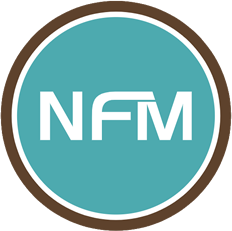In the video [How to Find 200 New Donors in 12 Minutes – Part 3], we talked about why donor visits are one of the most powerful tools you have for building real relationships—and raising real money.
If you haven’t watched that video yet, I’d recommend starting there. It’ll give you the “why.” This post is all about the “how.”
Let’s say you’ve got someone curious. They came to your event. Maybe they gave a small gift. They like what you’re doing, and they’re open to learning more.
Now they’ve agreed to visit your program. This is your moment.
And I’ll tell you right now—it’s not about saying all the right words. It’s about making people feel something real.
But that doesn’t mean you go in unprepared. After nearly 30 years of helping churches and nonprofits raise money, I’ve seen what works—and what backfires. So I want to walk you through exactly what to say (and what not to say) during a donor visit.
Let’s get into it.
First, Here’s What You’re Really Doing
You’re not giving a tour.
You’re giving a window into your ministry’s heart.
You’re not performing.
You’re inviting someone to witness something sacred—and ask themselves, “Do I want to be part of this?”
So don’t overthink it. Just get clear on what the visit should do:
- Show them something real
- Help them understand the impact
- Let them ask questions
- Invite them into partnership
That’s it.
Now let’s walk through the dos and don’ts.
What to Say: 5 Key Things to Prepare
1. Start with a welcome that feels human.
Not robotic. Not overly formal. Just “We’re really glad you’re here. It means a lot that you’d take time to come see us.”
People give to people. Make them feel seen.
2. Share a brief, honest mission story.
Not your whole history. Not your org chart. Just one real story that brings your work to life.
Example:
“Last month, one of our teens got her first college acceptance letter. She told our staff, ‘No one in my family even talked about college—until I joined this program.’ Moments like that are why we show up every day.”
3. Explain the impact of what they’re seeing.
As you walk through, narrate what they’re seeing. But tie it to outcomes.
Not: “This is our after-school room.”
Say: “This is where 40 kids gather each week for homework help and mentorship. In the past year, we’ve seen GPA improvements in 70% of them.”
4. Name the opportunity.
Be clear and grounded: “This is what we’re doing. Here’s the gap. And here’s what it would take to fill it.”
You’re not asking for money yet. You’re naming the need and letting the person consider where they might fit.
5. Invite their questions.
Say something like: “Before we wrap, what questions do you have for us? What are you curious about?”
People who ask questions are more likely to give. Give them space to process out loud.
What Not to Say: Avoid These Common Pitfalls
1. Don’t apologize for your space.
I don’t care if your carpet is worn or your chairs don’t match. Do not start with “Sorry, it’s not much.” Own it. What matters is that it’s being used for impact.
2. Don’t turn it into a PowerPoint presentation.
Save the decks for grant applications. If someone’s on-site, they want to feel—not flip through data.
3. Don’t downplay the ask.
Saying things like “Even if you just…” or “We totally understand if you can’t…” sets the tone of smallness. Be direct and dignified.
Instead:
“We’re looking for partners who want to help us scale this work. If that’s something you’d consider, we’d love to talk more.”
4. Don’t end without a next step.
Even if the ask doesn’t happen on the spot, you should leave with clarity. Invite them to a follow-up coffee. Let them know when you’ll reach back out. Set a next conversation.
A Real Story: The $10,000 Visitor
A few years ago, I was working with a church in D.C. They had a small but powerful Bible study for returning citizens—men and women reentering the community after incarceration.
We invited a potential donor to sit in on a session.
She sat quietly in the back. Didn’t say much. But during the conversation, she heard one man say, “This group is the only reason I stayed out of jail this year.”
That was it.
She gave $5,000 the next day. Three months later, she gave again. And eventually, she became one of the founding donors of a new building that could serve even more folks like him.
None of that happened because someone gave the perfect pitch. It happened because she saw something real—and we let the moment do its work.
Final Thought: Show What’s Real
If you remember nothing else, remember this:
Your job isn’t to sell.
Your job is to show.
Let people see your work. Let them feel the impact. And then give them a chance to respond—with generosity, with curiosity, with real partnership.
Download the Free Donor Visit Checklist
To make this easier, we put together a [Donor Site Visit Toolkit]. It includes:
- A prep checklist
- What to say during the visit
- Follow-up steps
- And a sample one-pager to leave with your guest
Use it. Share it with your team. And make your next visit the beginning of something big.
